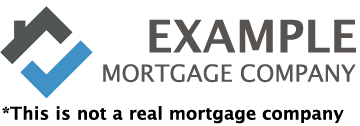
Refinancing is a word thrown around in the mortgage world and can be a very useful tool for homeowners. But there are plenty of misconceptions about what a mortgage refinance is and what it entails. By understanding the four most common myths about refinancing, you can learn the truth about how a refinance loan could benefit your situation.
Myth #1: You Should Only Refinance If You Can Get A Lower Interest Rate
Many homeowners think that refinance loans only make sense if current interest rates are lower than their mortgage rate. There are other reasons to refinance though. Borrowers can still save money in the long run by refinancing to a 15-year loan from a 30-year loan. This may increase the monthly payment, depending on how long you have already had your mortgage, but it could save you tens of thousands of dollars in interest over the long-term. Other borrowers may benefit from pulling out some of their home equity with a refinance loan. These funds can be used for anything: business investments, kids college tuition, medical bills, etc. You are essentially using your home like a bank with the perk of generally lower interest rates than those for standard business or personal loans.
Myth #2: Refinance Loans Will Make It Harder to Sell Your Home
A refinance loan is not a second loan; it does not put a lien on your home like a home equity loan or home equity line of credit does. These loans must be repaid before a home can be sold or the repayment must come out of the home sale proceeds. Refinance loans simply replace the existing first mortgage and will not prevent the home from being sold.
Myth #3: Refinancing Will Cost You Your Equity
There are some refinance loans that allow you to tap your home equity, like a cash-out refinance. This is because you are actually adding to your loan principal by pulling some cash out of your equity. However, if you are looking to get a lower interest rate or shorten your mortgage term, your hard-earned equity will not be touched. These types of refinance loans can actually help you build home equity faster as you pay down the mortgage faster.
Myth #4: Refinancing is Free and Does Not Require Credit Checks
There are plenty of advertisements out there that make it seem that refinancing will not cost you anything or require a credit check. In reality, most lenders do run a credit check and a refinance loan is never completely cost-free. Because the lender is making you an entirely new home mortgage loan, he or she needs to know that you are credit-worthy and will run credit checks and ask for the traditional loan information like bank and tax statements. And the best credit scores still win the best interest rates, so be sure your credit profile is in good condition before applying for a refinance.
And refinancing does require closing costs and fees, just like a traditional first mortgage. This can add up to between 2% and 5% of the existing mortgage’s principal. While some lenders allow you to roll these costs into the total home loan, you will still be paying for them over the course of the loan and it will increase the principal of your mortgage.
By learning the truth from the myths about refinancing, you can be prepared to take advantage of low rates, shorter terms, or your home equity when the need arises. Call us today at 801-221-9400 to see how much you could save by refinancing your home.
